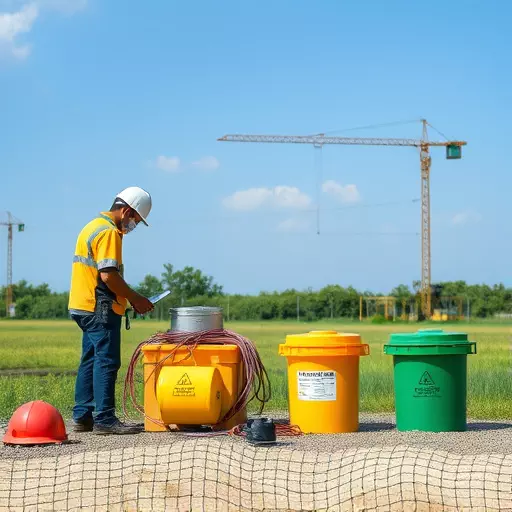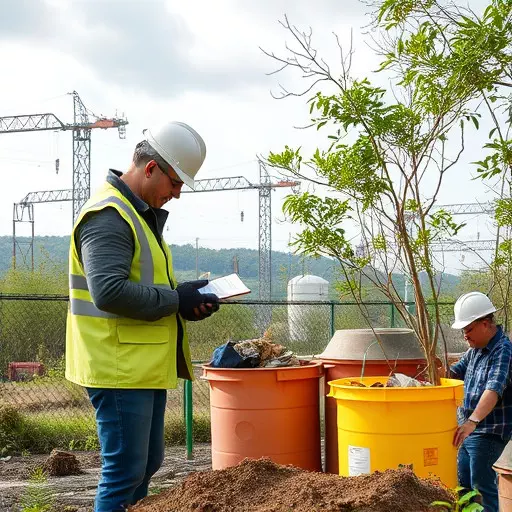Resource conservation audits, including comprehensive environmental compliance inspections and specialized hazardous waste management audits, are essential tools for driving sustainable practices. These in-depth evaluations go beyond legal requirements by assessing various sectors of an organization's operations to identify enhancements for environmental regulatory frameworks. By aligning with environmental standards, businesses can minimize risks, optimize costs, and contribute to long-term ecological sustainability while ensuring responsible hazardous waste management.
“Unleash the power of resource conservation with our comprehensive guide. We explore the intricate world of audits, a vital tool for sustainable practices. From understanding the basics of resource conservation audits to delving into specific aspects like environmental compliance inspection and hazardous waste management, this article is your roadmap.
Discover how these audits, guided by environmental regulatory frameworks, play a pivotal role in promoting eco-friendly operations. Uncover key components and best practices for conducting effective hazardous waste management audits, ensuring businesses thrive responsibly.”
- Understanding Resource Conservation Audits: A Comprehensive Guide
- The Role of Environmental Compliance Inspection in Audit Process
- Hazardous Waste Management Audit: Key Components and Best Practices
Understanding Resource Conservation Audits: A Comprehensive Guide

Resource conservation audits are a crucial aspect of ensuring environmental compliance and responsible stewardship of natural resources. These comprehensive assessments go beyond basic regulatory frameworks by delving into an organization’s practices and procedures to identify areas for improvement in various sectors, including energy, water, waste management, and more. By aligning operations with environmental regulatory standards, businesses can mitigate risks, reduce costs, and contribute to sustainable development.
An environmental compliance inspection involves a thorough review of records, policies, and on-site observations to evaluate adherence to environmental laws and regulations. This process includes hazardous waste management audits, where experts scrutinize the handling, storage, and disposal of potentially harmful substances. Through this meticulous examination, organizations can uncover inefficiencies, implement best practices, and foster a culture of continuous improvement, ultimately leading to enhanced environmental performance and responsible resource conservation.
The Role of Environmental Compliance Inspection in Audit Process

Environmental Compliance Inspection plays a pivotal role in the resource conservation audit process by ensuring that organizations adhere to environmental regulatory frameworks. These inspections delve into various aspects, including hazardous waste management, air and water quality standards, and sustainable practices. During an audit, environmental compliance officers scrutinize records, conduct on-site assessments, and verify the proper implementation of environmental management systems.
This inspection is a game-changer in promoting responsible resource use. It helps identify non-compliance issues, facilitates corrective actions, and encourages organizations to integrate eco-friendly practices into their operations. Moreover, it contributes to a comprehensive hazardous waste management audit by ensuring that waste is handled, stored, and disposed of according to strict regulations, thereby minimizing environmental impact.
Hazardous Waste Management Audit: Key Components and Best Practices

A Hazardous Waste Management Audit is a critical component of any organization’s commitment to environmental compliance and sustainability. This detailed inspection goes beyond surface-level assessment, delving into every aspect of how hazardous materials are handled, stored, transported, and disposed of within a facility. Key components include evaluating the accuracy of waste classification, ensuring adherence to environmental regulatory frameworks, assessing proper containment measures, and verifying the effectiveness of employee training programs.
Best practices in these audits emphasize comprehensive documentation, rigorous data verification, and stakeholder involvement. Regular and thorough audits not only help organizations meet legal obligations but also identify areas for improvement in their hazardous waste management practices. This proactive approach fosters a culture of environmental responsibility and drives continuous enhancement in sustainability efforts.


